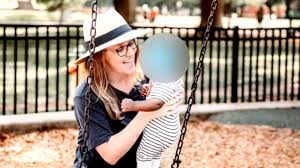A 38-year-old woman from Georgia is suing a fertility clinic after a devastating mix-up led to her carrying and giving birth to a baby who was not biologically hers. The lawsuit, filed in Georgia state court, accuses Coastal Fertility Specialists of negligence in transferring the wrong embryo during her in vitro fertilization (IVF) procedure.
The woman, Krystena Murray, says she found out the heartbreaking truth only after giving birth to a baby boy in December 2023. Murray, a wedding photographer from Savannah, had used the clinic’s services to conceive a child with a sperm donor. She specifically chose a donor who matched her physical traits—white with dirty blond hair and blue eyes. However, the baby she delivered had darker skin, immediately raising suspicions.
“I knew something was wrong the moment I saw him,” Murray shared during a press conference. Despite her initial shock, she bonded with the baby and loved him as her own, even after a DNA test confirmed he was not biologically related to her.
The Start of a Legal Battle
In February 2024, Murray contacted Coastal Fertility Specialists through her attorney. The clinic identified the baby’s biological parents and confirmed through another DNA test that the child was theirs. Shortly after, the biological parents sued for custody, leaving Murray devastated.
On the day of the custody transfer, Murray described her heartbreak: “I walked into the courthouse with my child, and I left with an empty stroller. They walked away with my son. I loved him as my own.”
The Fertility Clinic’s Response
Coastal Fertility Specialists issued a statement expressing regret over what they called an “unprecedented error.” The clinic assured that the mistake was isolated and that additional safeguards had been put in place to prevent such incidents in the future.
However, Murray’s attorney, Adam Wolf, argued that such errors should never happen. “This is the cardinal sin for fertility clinics—transferring the wrong embryo,” Wolf stated, adding that Murray is still unsure if any of her own embryos were used elsewhere or remain in storage.
The lawsuit accuses the clinic and its embryology lab director, Dr. Jeffrey Gray, of negligence and seeks damages.
Industry Oversight Under Scrutiny
While such IVF mix-ups are rare, they are not unheard of. Similar cases in California involved couples raising each other’s biological children before swapping them months later. These incidents have sparked concerns about the lack of federal regulation in the U.S. IVF industry.
According to Dov Fox, a law professor and director of the Center for Health Law Policy and Bioethics at the University of San Diego, no federal agency oversees such errors in the IVF process. While some aspects of IVF are regulated, like medical devices and laboratory testing, there is no national system to prevent or track these mistakes.
“There’s no guaranteed recourse for affected patients, and that’s a huge gap,” Fox explained.
Murray’s Call for Change
Murray hopes her case will bring attention to the need for stricter oversight in the IVF industry. “I spent my entire life wanting to be a mom. I loved, nurtured, and grew my child, and I would’ve done anything to keep him,” she said, calling the baby she delivered “the most beautiful human” she’s ever seen.
Her attorney echoed this sentiment, urging for regulations similar to those in other developed countries. “Until IVF clinics face mandatory certifications and reporting requirements, these errors will continue to happen,” Wolf warned.
A Rare Yet Devastating Issue
Murray’s story sheds light on the emotional and legal turmoil caused by fertility clinic errors. Her case emphasizes the need for better safeguards to protect families from similar heartbreak.
While Murray fights for answers about the fate of her own embryos, her story serves as a stark reminder of the complexities—and risks—of assisted reproduction.
Disclaimer – Our team has carefully fact-checked this article to make sure it’s accurate and free from any misinformation. We’re dedicated to keeping our content honest and reliable for our readers.




